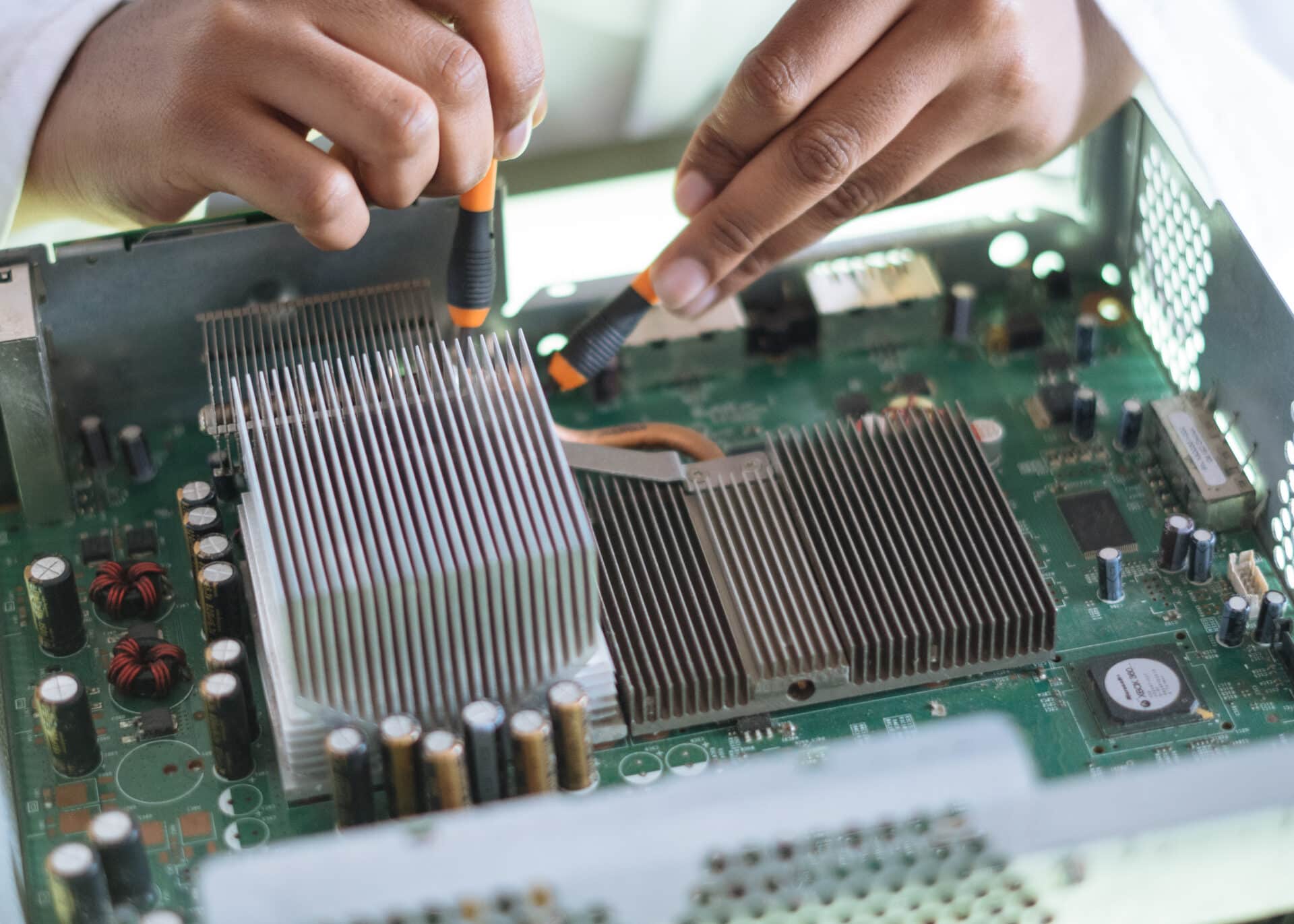The condenser is a key component in the distillation process. It is used to cool the vapors produced in the distillation process and convert them back into liquid form. It works by forcing the vapor through an enclosed chamber, where it is cooled and condensed back into liquid form. This condensed liquid is then collected in a container or receiver, ready for further processing or use. The condenser also helps to improve the efficiency of the distillation process by ensuring that all of the vapors are converted back into liquid form before they can escape.A condenser is an essential component in many distillation setups. It is used to cool the vapor that is produced during distillation so that it can be condensed back into a liquid. This allows for the separation of components within a mixture based on their boiling points. Condensers are typically made of glass or metal and are fitted with tubing that carries a cooling medium, usually water or air, to cool the vapor and condense it back into a liquid.
Types of Condensers Used in Distillation
Distillation is a process used to separate mixtures of liquids into their component parts. In distillation, the mixture is heated until it boils, and the vapors are then collected and condensed back into a liquid. To do this, condensers are used to cool the vapors and turn them back into a liquid. There are several types of condensers that can be used in distillation, including surface condensers, coil condensers, shell-and-tube condensers, and air-cooled condensers.
Surface condensers are the most basic type of condenser used in distillation. They consist of a large surface area with water flowing through it. The hot vapors from the distillation process come into contact with the cold surface of the condenser and cool down rapidly, turning them back into liquid form.
Coil condensers are similar to surface condensers but use coils instead of a flat surface to cool the vapors. The coils increase the surface area that can come in contact with the hot
How Does a Condenser Work During Distillation?
During distillation, a condenser is used to cool and condense the vapors produced by the heated liquid. The condenser works by reducing the temperature of the vapor, which causes it to turn back into a liquid. This process is known as condensation. The condenser is essentially a coil of metal tubing which has been cooled by circulating cold water or other cooling medium around it. As the vapor passes through the condenser, it is cooled and liquefied, and then collected in a separate container. In addition to cooling and condensing vapors, the condenser also helps to separate different components of the mixture since different compounds have different boiling points, making them easier to collect in their pure form.
The condenser is a key component of any distillation system because it is necessary for effectively separating and collecting volatile compounds from mixtures. Without a condenser, most of the heat energy used during distillation would be wasted as vapor would escape without being collected. By cooling and liquefying the vapors produced during distillation, a condenser helps increase efficiency and maximize yield from each batch of
The Benefits of Using a Condenser in Distillation
Distillation is an important process in the chemical and pharmaceutical industries. In order to achieve optimal separation of compounds, it is necessary to use a condenser in the distillation process. A condenser is a piece of equipment that helps to cool hot vapor from the distillation process and convert it into liquid form. The benefits of using a condenser in distillation include improved efficiency, better safety, and greater control over the distillation process.
The use of a condenser helps to improve the efficiency of the distillation process by allowing for better separation between compounds. By cooling the vapors before they reach the condenser, the compounds are more likely to be completely separated from each other. This leads to improved purity levels and higher yields when compared to processes without a condenser.
Using a condenser also improves safety when it comes to performing distillations. By cooling down hot vapors before they reach the condenser, any potential hazards associated with hot vapors are minimized or eliminated altogether. Additionally, having a separate cooling unit on hand ensures that any potential leaks or
What Materials Are Used to Make a Condenser for Distillation?
A condenser is a vital component in distillation, as it is used to cool the vapor and convert it back into liquid form. The material used to construct a condenser will depend on the type of distillation being performed and the type of material being distilled. Common materials used for condensers include copper, stainless steel, and glass. Copper is a popular choice due to its excellent thermal conductivity and corrosion resistance. Stainless steel is also an excellent choice as it is durable and can withstand high temperatures. Glass is an economical option, but may not be suitable for some applications due to its fragility. Additionally, more specialized materials may be needed if the material being distilled is particularly corrosive or heat-sensitive.

Pressure Rating
When selecting a condenser for distillation, it is important to consider the pressure rating of the condenser. The pressure rating should be equal to or greater than the maximum pressure expected during operation. This ensures that the condenser will not fail under high pressure conditions. It is also important to consider whether the condenser can handle the expected temperature range of the process. If the temperature range exceeds the condenser’s rated capacity, additional cooling may be required.
Material Compatibility
The material compatibility of a condenser is also an important factor to consider when selecting a condenser for distillation. The material must be compatible with any chemicals or solvents that may come into contact with it during operation. In addition, it must be able to withstand any corrosive effects caused by these substances. It is also important to consider whether the material can handle thermal expansion and contraction due to changes in temperature.
Efficiency
The efficiency of a condenser is another important factor when selecting one for distillation. A more efficient condenser will
Common Design Considerations for Condensers Used in Distillation
The design of condensers used in distillation is an integral part of the entire process. The condenser must be able to efficiently return the vapour back to liquid form at the desired temperature and pressure. The efficiency of the condenser has a direct effect on the purity and yield of the distillate, which makes it important to choose a design that is efficient and reliable. There are several common design considerations that should be taken into account when selecting a condenser for distillation.
The type of material used in construction is one of the most important factors when choosing a condenser. Commonly used materials include stainless steel, glass, ceramic, and copper alloys. Each material has its own unique properties which must be considered before making a selection. Stainless steel is usually chosen for its durability and low maintenance requirements, while glass offers better thermal insulation properties but can be more difficult to clean and maintain.
The size and geometry of the condenser are also important considerations as they affect the surface area available for heat transfer. Generally speaking, larger surface areas lead to higher efficiency and lower operating costs due to lower
Setting Up a Condenser for Distillation
A condenser is an essential component of a distillation apparatus. It is used to cool and condense the vapors produced during the distillation process. The condenser works by circulating cold water or other cooling medium around the tube where the vapors pass through. This causes the vapors to cool down and return to their liquid state, leaving behind any impurities or contaminants. Setting up a condenser correctly is key to a successful distillation process.
The first step in setting up a condenser for distillation is to attach it to the boiling flask. Most condensers come with clamps that can be used to attach it securely to the flask. Once it is attached, position the condenser so that it points away from you and towards an open window or ventilated area. This will ensure that any gases produced during the distillation process are expelled safely outside, rather than into your workspace.
The next step in setting up a condenser for distillation is to connect it to a cold water source. Most condensers come with pre-drilled holes that can be connected directly

Conclusion
The condenser is an essential part of a distillation apparatus. It is used to cool and condense the product vapors created in the distillation process. The cooled vapors then flow into a separate container, where they can be collected as the desired product. Without a condenser, it would not be possible to separate the desired product from the other substances present in the mixture during distillation. The condenser is also important for preventing volatile products from escaping, which could cause a hazardous situation. In summary, the condenser plays an important role in any distillation apparatus by cooling and condensing vapors and preventing dangerous vapors from being released.
In conclusion, the condenser is a critical component in any distillation apparatus that enables us to safely and effectively separate desired products from other materials. Its ability to cool and condense vapors while preventing volatile products from escaping makes it an essential tool for any chemist or laboratory technician working with distillation techniques.

